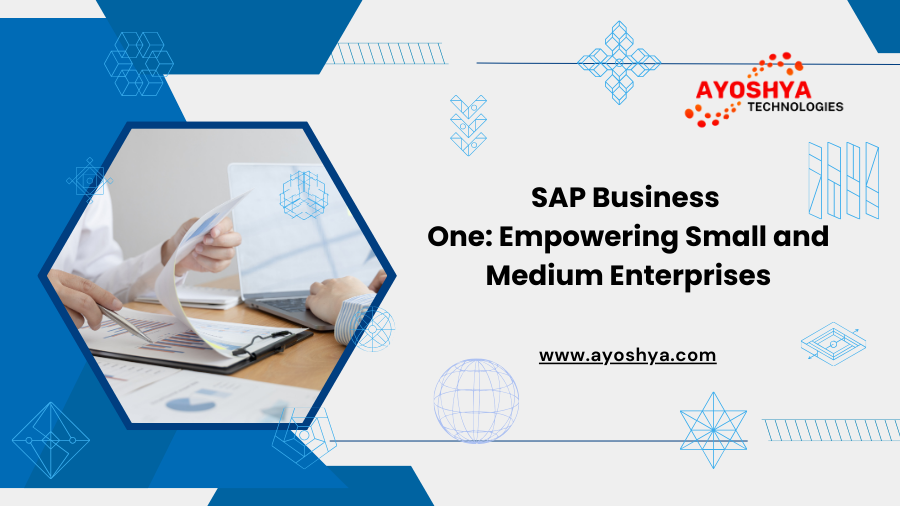SAP Business One: Empowering Small and Medium Enterprises
Introduction
Small and Medium Enterprises (SMEs) are the backbone of the global economy. To thrive in today’s competitive business landscape, they need efficient, cost-effective, and scalable solutions. SAP Business One is designed precisely for this purpose. In this article, we’ll explore how SAP Business One empowers SMEs to streamline their operations and drive growth.
Understanding SAP Business One
SAP Business One is an enterprise resource planning (ERP) software solution tailored for SMEs. It provides a unified platform for managing various business functions, including finance, sales, inventory, and customer relationships.
Benefits of SAP Business One
1. Streamlined Operations
SAP Business One integrates core business processes, eliminating data silos and improving operational efficiency.
2. Improved Decision-Making
Real-time data analytics and reporting enable informed decision-making, fostering business growth.
3. Cost Efficiency
SMEs can achieve cost savings by automating tasks and reducing manual errors.
4. Scalability
As businesses grow, SAP Business One scales with them, ensuring long-term viability.
Key Features and Capabilities
1. Financial Management
Manage accounting, banking, and financial reporting with ease.
2. Sales and Customer Management
Streamline sales processes, from lead to cash, and enhance customer relationships.
3. Inventory and Supply Chain
Optimize inventory levels, reduce carrying costs, and enhance supply chain visibility.
4. Analytics and Reporting
Access real-time analytics and generate insightful reports for data-driven decision-making.
Implementing SAP Business One
Implementing SAP Business One involves several steps, including assessment, customization, and training. It’s essential to choose experienced SAP partners for a smooth deployment.
Real-World Success Stories
Numerous SMEs have benefited from SAP Business One:
- Streamlined Operations: A manufacturing company reduced production time by 20% with SAP Business One.
- Business Growth: A retail business expanded its operations across multiple locations seamlessly.
- Enhanced Customer Service: A service provider improved response times and customer satisfaction.
Challenges and Solutions
Data Migration
Challenges related to data migration can be overcome with thorough planning and data cleansing.
User Adoption
Employee training and change management strategies ensure smooth user adoption.
Customization and Integration
It’s flexibility allows customization to align with specific business processes.
Customization and Scalability
It is highly customizable, allowing businesses to tailor it to their unique requirements. As SMEs grow, the software scales effortlessly, supporting their evolving needs.
Future Trends
It is continually evolving. Future trends may include deeper integration with AI and machine learning, further enhancing automation and predictive analytics.
Conclusion
It empowers SMEs to compete effectively in today’s dynamic business environment. Its benefits in streamlining operations, improving decision-making, and fostering growth make it a valuable asset for small and medium-sized enterprises.
FAQs
1. What is SAP Business One?
It is an ERP software solution designed for Small and Medium Enterprises (SMEs) to manage various business functions efficiently.
2. How does it benefit SMEs?
It streamlines operations, enhances decision-making, reduces costs, and scales with business growth.
3. What key features does it offer?
It includes financial management, sales and customer management, inventory and supply chain optimization, and robust analytics and reporting.
4. How can SMEs implement it successfully?
Successful implementation involves assessment, customization, and employee training, often with the assistance of experienced SAP partners.
5. What are the future trends in it?
Future trends may include deeper integration with AI and machine learning for enhanced automation and predictive analytics.
Free Bonuses:
O DATA and Business Intelligence (BI)



